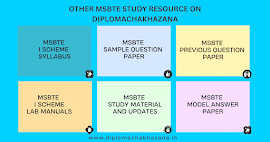diplomachakhazana
This MCQs are provided by suraj_ahire333
diplomachakhazana
This MCQs are provided by suraj_ahire333
JOIN US
ENGINEERING GEOLOGY
Question Which of the following best describes mudstone?
A Mudstone is a coarse grained rock with graded bedding
B Shale is a aphinitic volcanic rock
C Mudstone is a fine grained sedimentary rock without planes of
fissility.
D All of the above
Answer C
Question Difference in angularity of the constituents grains between
conglomerate and breccia arises due to
A Length of transport of the grains
B Hydrolysis of the parent rock
C Chemical attack of rainwater
D None of the above
Answer A
Question Laterites and Bauxites are
A Organic deposits
B Residual deposits
C Sedimentary deposits
D Chemical deposit
Answer B
Question
Rock in figure P has been subjected to metamorphic changes and
converted to Q. Which of the following type of minerals are
developed in this process
A Stress Minerals
B Antistress Minerals
C Rounded
D All of the above
Answer A
Question Choose the correct answer for chemical decomposition of
Orthoclase
A Kaolin
B Chlorite
C Garnet
D None of the above
Answer A
Question Coral limestone is formed by
A Colonies of Corals
B Broken rock fragments
C Both A and C
D None of the above
Answer A
Question Chert is cryptocryastalline variety of ,
A Silica
B Orthoclase
C Limestone
D Carbonates
Answer A
Question Calcite, Dolomite, Magnesite are varieties of
A Silica
B Clay
C Carbonates
D None of the above
Answer C
Question Kaolin, Montmorillonite, Illite are varieties of _____
A Silica
B Clay
C Felspar
D None of the above
Answer B
Question Arrange the minerals in decreasing order of Hardness on Mohs'
Scale
A Diamond, Quartz, Talc, Gypsum
B Diamond, Quartz, Topaz, Corundum
C Quartz, Orthoclase, Calcite, Talc
D None of the above
Answer C
Question Arrange the minerals in increasing order of Hardness on Mohs'
Scale
A Talc, Gypsum, Quartz, Diamond
B Diamond, Quartz, Topaz, Corundum
C Quartz, Orthoclase, Calcite, Talc
D None of the above
Answer A
Question Choose Mineral and its correct luster
A Quartz: Vitreous
B Diamond: Admantine
C Mica : Pearly
D All of the above
Answer D
Question Choose Mineral and its correct luster
A Quartz: Admantine
B Diamond: Pearly
C Mica : Vitreous
D None of the above
Answer D
Question Choose the correct set of fractures shown by minerals
A Conchoidal, Even, Uneven, Hackly
B Conchoidal, Admantine, Vitreous, Smooth
C Vitreous, Conchoidal, Even, Uneven
D None of the above
Answer A
Question Which of the following statement best describes the following
Curve shown in figure
A Gravels size particles are transported when velocity becomes too
less
B Sand size particles require higher velocity for deposition as
compared to gravel size particles
C Clay particles require higher velocity of erosion as compared to
sand size particles
D None of the above
Answer C
Question Which of the clay is highly expansive
A Kaolin
B Montemorillonite
C Quartz
D None of the above
Answer B
Marks 1
Unit I C1Id
Question Radius of earth is estimated to be
A 6370 km
B 8370 km
C 3700km
D 10370 km
Answer A
Question Mohorovicic discontinuity separates
A Crust from mantle
B Mantle from core
C Sial from sima
D None of these
Answer A
Question Sial and Sima combinely called as
A Core
B Mantle
C Crust
D None of these
Answer C
Question Gutenberg discontinuity separates
A Sial from Sima
B Mantle from Core
C Crust from Mantle
D None of these
Answer B
Question The layer that separates crust from core is the
A Magma layer
B Lithosphere
C Mantle
D Continent
Answer C
Question Age of the earth is currently thought to be
A About 6000 years old
B About 6 billion years old
C About 4,500,000 years old
D About 4,500,000,000 years old
Answer D
Question When vesicles are filled up by secondary minerals in the basalt
is called as
A Scoria
B Amygdaloidal basalt
C Pumice
D None of the above
Answer B
Question Example of igneous rock which float on water
A Limestone
B Pumice
C Gabbro
D Basalt
Answer B
Question The mineral give blackens the fingers
A Graphite
B Corundum
C Fluorite
D None of the above
Answer A
Question Example of organic deposit is
A Shelly limestone
B Shale
C Mudstone
D None of the above
Answer A
Question Kota stone is
A Conglomerate
B Limestone
C Granite
D None of the above
Answer B
Question Which is one of the agents of Metamorphism?
A Temperature
B Rain
C Climate
D Atmosphere
Answer A
Question Coal is
A Economic mineral
B Igneous rock
C Metamorphic rock
D None of the above
Answer A
Question Find the odd man out
A Shist
B Phyllite
C Basalt
D Granulite
Answer C
Question Find the odd man out
A Quartz
B Galena
C Calcite
D Orthoclase
Answer B
Question Graphic texture is formed due to intergrowth of
A Quartz and Felspar
B Quartz and Mica
C Mica and Alumino silicate
D None of the above
Answer A
Question Granites Shows ___________ colour index
A Melanocratic
B Mesocratic
C Leucocratic
D None of these
Answer C
Question Organic sedimentary rock is ________________
A Coral Reef
B Limestone
C Mudstone
D Sandstone
Answer A
Question Shelly Limestone is example of _________________
A Chemical Deposit
B Organic Deposit
C Residual Deposits
D All of the aboves
Answer B
Question Leaf prints occurs in ________________
A Basalt
B Gneiss
C Shale
D Sandstone
Answer C
Question Find the oddman out
A Soil
B Laterite
C Bauxite
D None of the above
Answer D
Question Physical weathering of Granite results into
A Formation of powedered mass
B Formation of clay minerals
C Formation of sand grains
D None of the above
Answer C
Question Black cotton soil is a result of __________________
A Chemical Weathering of Marble
B Chemical weathering of Basalt
C Physical Weathering of Basalt
D Biochemical weathering of sanstone
Answer B
Question Chemical weathering is also known as
A Frost wedging
B Disintegration
C Decomposition
D Erosion
Answer C
Question Physical Weathering is also known as __________________
A Decomposition
B Disintegration
C Discontinuity
D Deformation
Answer B
Question Directed pressure leads to change in_____________ of minerals
of pre existing rocks
A Weight
B Shape
C Composition
D None of these
Answer B
Question Sandstone may consists of ______________ coloured cementing
material
A Red
B White
C Green
D Both A & B
Answer D
Question Siliceous sandstone with vitreous lustre is also called as
________
A Marble
B Quartzite
C Arkose
D All of the above
Answer B
Question Zeolites mainly occurs in basalt as
A Primary Minerals
B Secondary Minerals
C Tertiary Minerals
D Essential minerals
Answer B
Question Mottled/Spotted sandstone develops due to
A Leaching of Sodium
B Leaching of Potasium
C Leaching of Iron
D Leaching of Magnesium
Answer C
Question Calcite occurs in ________________ form
A Massive
B Crystalline
C Cryptocrystalline
D All of the above
Answer D
Question The pecularity of Non Clastic texture is ________________
A Absence of cementing material
B Presence of cementing material
C It is formed by chemical processes.
D Both A and C
Answer D
Question Natrolites, Stilbite, Apophylite are the varieties of
A Quartz
B Zeolites
C Felspars
D Mica
Answer B
Question Find the odd man out
A Natrolites
B Stilbite
C Apophylite
D Chalcopyrite
Answer D









0 Comments
Please feel free to comment. Being diploma students We are always ready to help diploma Students